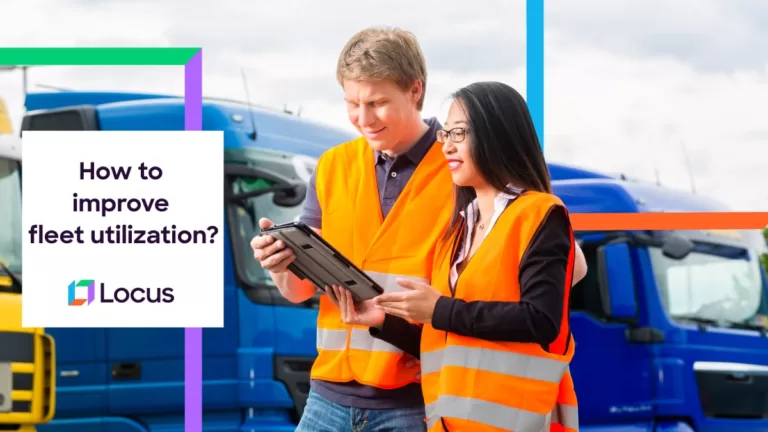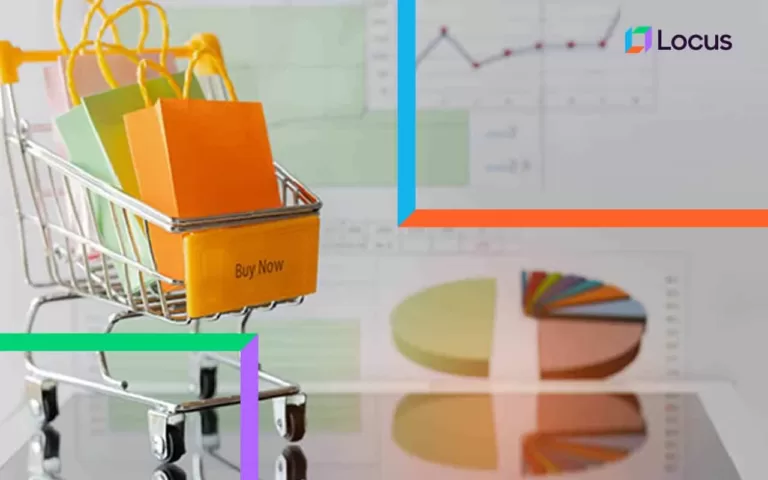Blog
How Logistics Tech Can Optimize E-Grocery Deliveries in MENA
Aug 20, 2020
5 mins read

2020 has been a year of massive change; for people, economies, and businesses worldwide. Uncertain country-wide lockdowns and social distancing norms have changed the way buyers shop and companies sell.
Online shopping has gained more popularity than ever before since the pandemic began. Like many other parts of the world, the Middle East and Africa region has seen massive growth in E-commerce activities and online shopping of essentials, especially food and groceries during this period.
Despite the region’s lead in smartphone penetration at 65%, high internet usage, and higher-than-average disposable income, MENA’s online grocery market was only at infancy till 2019. According to Wamda’s report, “2019 Online Grocery Retail in MENA”, only 27% of consumers in the MENA region were interested in ordering groceries online, while 58% preferred to buy their groceries at supermarkets in 2019.
But the scenario is changing fast. Following the COVID-19 outbreak, E-grocery sales have seen unusually high volumes in the Middle East. According to McKinsey, grocery delivery saw a 31% increase in users in the UAE, and 66% of users said they intend to continue using the service after the health crisis ends.
Supermarket operator Carrefour’s online orders spiked by 917% in Saudi Arabia from January to June this year, while the United Arab Emirates and Egypt saw jumps of 257% and 747% respectively over the same period.
“Online has been… soaring since the start of COVID, although we have been growing before. The trend may last beyond the pandemic,” Alain Bejjani, CEO of MENA-based retail giant, Majid Al Futtaim, told CNBC.
At the same time, supermarkets have shown tremendous agility during this period and embraced omnichannel selling quickly to fulfill customer expectations. Brick-and-mortar stores, supermarkets, and conventional grocery sellers have introduced mobile apps that allow customers to place orders online.
Retail brands have also started offering delivery services and subscription boxes to their regular customers. Several grocers have listed their businesses on third-party delivery platforms such as NanaDirect, el Grocer, and BulkWhiz, which ensure on-demand home delivery of groceries to consumers.
Logistical Challenges in MENA
Middle Eastern countries may have supremely developed infrastructure, but grocery delivery has its own set of challenges in the region.
Vague and imprecise address systems across the MENA region lead to inefficiencies in planning and executing last-mile delivery operations. Most people do not write proper addresses, and some write addresses in local languages like Arabic, even in highly developed cities like Dubai. Ambiguous addresses are not so easy to locate for delivery executives, often causing chaos on the ground and delays in last-mile deliveries.
The majority of Middle Eastern shoppers still rely heavily on traditional cash payment systems. It is either due to a lack of trust in online payment methods or on home delivery services. It often leads to a high rate of order cancellations before they’re even delivered and thereby unnecessary shipment costs.
However, despite the challenges underlying in MENA’s e-grocery supply chain, brands must still keep the promise of same-day delivery to their customers. Artificial Intelligence is playing a crucial role in optimizing logistics and last-mile operations for some of the world’s top E-grocery enterprises.
Retail brands, E-grocery sellers, and supermarket owners in MENA are now turning to logistics tech to improve last-mile deliveries and stand out in the dynamic and competitive market.
How Logistics Tech Can Improve E-Grocery Deliveries in MENA
Accurate Geocoding & Optimal Routing
Technology can help businesses overcome the long prevalent problem of imprecise address systems in the Middle East. Geocoding is the process of converting physical addresses into exact location points on a map. Poorly written address notes and addresses written in Arabic language are also a challenge. Smart geocodes use Machine Learning to decode these addresses accurately and can convert even the fuzziest addresses can be precisely located. Route optimization software can plan delivery routes for multiple locations, offering the shortest and most optimal route to take avoiding traffic and other on-ground restrictions.
Check out: The Definitive Guide to Logistics Route Optimization
Automated Dispatch Planning
Daily dispatch planning is often a time-consuming and cumbersome process, which takes hours to complete manually. With the help of advanced route optimization solutions, e-grocery delivery businesses can plan on-demand daily dispatches within minutes, saving time and improving logistics planning efficiency.
Smart Rider Allocation
Since grocery delivery is an on-demand market, assigning delivery executives quickly and in the right direction is essential to ensure timely delivery and customer satisfaction. Supermarkets often operate on a hyper-local model and have in-house agents to carry out delivery activities. However, for 3PL delivery platforms, who have hundreds of businesses listed with them, manually assigning on-demand orders to delivery agents is not that easy. Rider allocation software comes handy in such cases and takes into account rider area preferences and location knowledge to assign tasks to the right agents.
Real-time Visibility
Real-time status visibility is now essential for grocery businesses and customers alike. With the help of real-time tracking tools, logistics managers can monitor on-ground delivery operations and take immediate action if a deviation from the planned schedule occurs. It helps in ensuring fast deliveries and improves the productivity of delivery executives. At the same time, consumers can keep track of their order status, and be aware of who’s handling their package and when it is expected to arrive. Greater visibility improves the customer’s trust and loyalty with the brand.
The sudden spike in online shopping of groceries and the fast-changing market dynamics indicate that the trends introduced by the pandemic are here to stay in the Middle East. Businesses must respond soon to fulfill customer expectations even in the post-pandemic world and remain competitive in the long run.
Locus offers a range of AI-based logistics solutions to enterprises in grocery, retail, and E-commerce markets. Get in touch with our experts for a quick tour of our offerings.

Related Tags:

Fleet Optimization
How to Improve Fleet Utilization?
Imagine you’re a fleet manager, and should plan routes for delivery vehicles that day. Apart from the distance, you have to factor into other constraints like size of orders, costs, orders at each drop, time to load and unload to make sure orders reach your customers on time. Grueling isn’t it? But the question is […]
Read more
News
Walmart Posts Stellar Second-quarter Results, E-commerce Sales Jump by 97%
Retail major Walmart’s E-commerce sales in the US saw a 97% uptick as customers relied heavily on doorstep deliveries and curbside pickups.
Read moreMOST POPULAR
EDITOR’S PICKS
SUBSCRIBE TO OUR NEWSLETTER
Stay up to date with the latest marketing, sales, and service tips and news


How Logistics Tech Can Optimize E-Grocery Deliveries in MENA